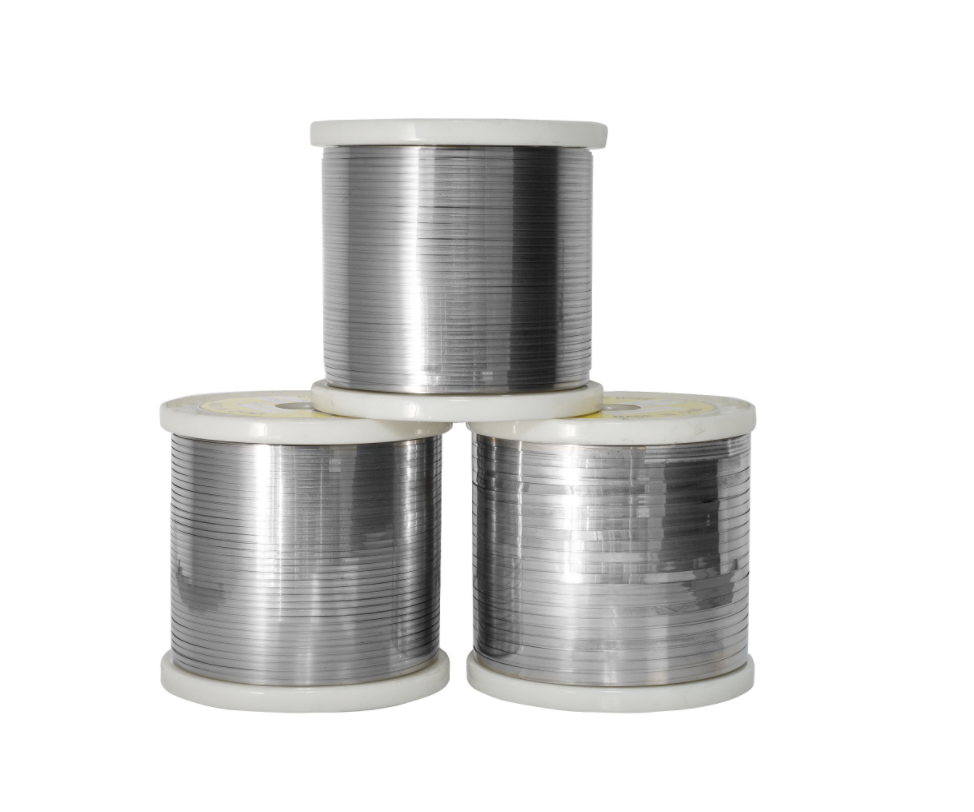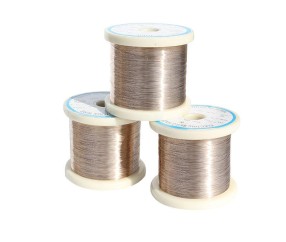Why do we choose FeCrAl Alloy as Heating resistance wire?
Release time:2025-12-30 Strike:1024 Inquire Now
Among all the resistance wires, why is FeCrAl used more widely all over the world?
Characteristics of FeCrAl Electric Heating Alloys:
1. High-Temperature Use:
The HRE alloy in FeCrAl electric heating alloys can be used at temperatures up to 1400°C, whereas the Cr20Ni80 alloy in nickel-chromium electric heating alloys can be used at 1200°C.
2. Long Service Life:
At the same high usage temperature in the atmosphere, the service life of FeCrAl elements can be 2-4 times that of nickel-chromium elements.
3. High Surface Load:
Due to the high allowable operating temperature and long service life of FeCrAl alloys, the surface load of the elements can also be higher. This not only allows for rapid heating but also saves alloy material.
4. Good Oxidation Resistance:
The dense Al2O3 oxide film formed on the surface of FeCrAl alloys adheres well to the substrate, preventing it from easily dispersing and causing contamination. Additionally, Al2O3 has high resistivity and a high melting point, which contribute to the excellent oxidation resistance of the Al2O3 oxide film. Its anti-carburization performance is also better than the Cr2O3 formed on nickel-chromium alloy surfaces.
5. Low Density:
FeCrAl alloys have a lower density than nickel-chromium alloys, meaning that less material is required to produce the same components.
6. High Resistivity:
FeCrAl alloys have higher resistivity than nickel-chromium alloys, allowing for the use of larger alloy materials in element design. This helps extend the element's service life, which is especially important for thin alloy wires.
7. Good Sulfur Resistance:
FeCrAl has excellent corrosion resistance in sulfur-containing atmospheres and when the surface is contaminated with sulfur-containing substances, whereas nickel-chromium is severely corroded.
8. Low Cost:
FeCrAl is much cheaper than nickel-chromium as it does not contain the relatively scarce nickel.
9. Disadvantages:
The main drawback of FeCrAl alloys is their low high-temperature strength. As the temperature increases, their plasticity increases, leading to deformation of the elements.

FeCrAl Heating resistance wires are integral to many aspects of daily life, providing essential functions in various applications.
1. Household Appliances:
Heating resistance wires are commonly found in household appliances such as:
· Toasters: The wire heats up to toast bread quickly and evenly.
· Electric Ovens and Stoves: They provide the necessary heat for cooking food.
· Hair Dryers: These wires generate the heat needed to dry hair efficiently.
· Electric Heaters: They warm up living spaces during colder months.
· Clothes Dryers: Resistance wires are used to dry clothes by generating heat.
2. Industrial Applications:
In industrial settings, heating resistance wires are critical for:
· Heat Treatment: They are used in furnaces for processes such as annealing, tempering, and hardening metals.
· Plastic Extrusion: Heating elements ensure the plastic is melted uniformly before molding.
· Semiconductor Manufacturing: They play a role in creating the precise conditions needed for producing semiconductors.
· Glass Production: Used in kilns to melt glass at high temperatures.
3. Medical Devices:
Heating resistance wires are essential in medical equipment, including:
· Sterilizers: Ensuring that surgical instruments are free of microbes.
· Incubators: Providing controlled heat for neonatal care.
· Respiratory Therapy Devices: Warming the air to the appropriate temperature for patient comfort.
-
How to Apply for BIS Certificate India
Here is a clear explanation in English on how to apply for a BIS...
-

Alloy28 Stainless steel with 28% Cr and 3% Mo
🔧 UNS N08028 Stainless Steel – Overview and ApplicationsUNS N080...
-

Exploring the Applications of Resistance Wire: From Industrial Heating to Electric Vehicles
Resistance wire is a specialized material widely used in various...
-

How to Caculate the Nichrome80 Temperature
We’re super stoked about our Nichrome 80 wire, a go-to for high-...



